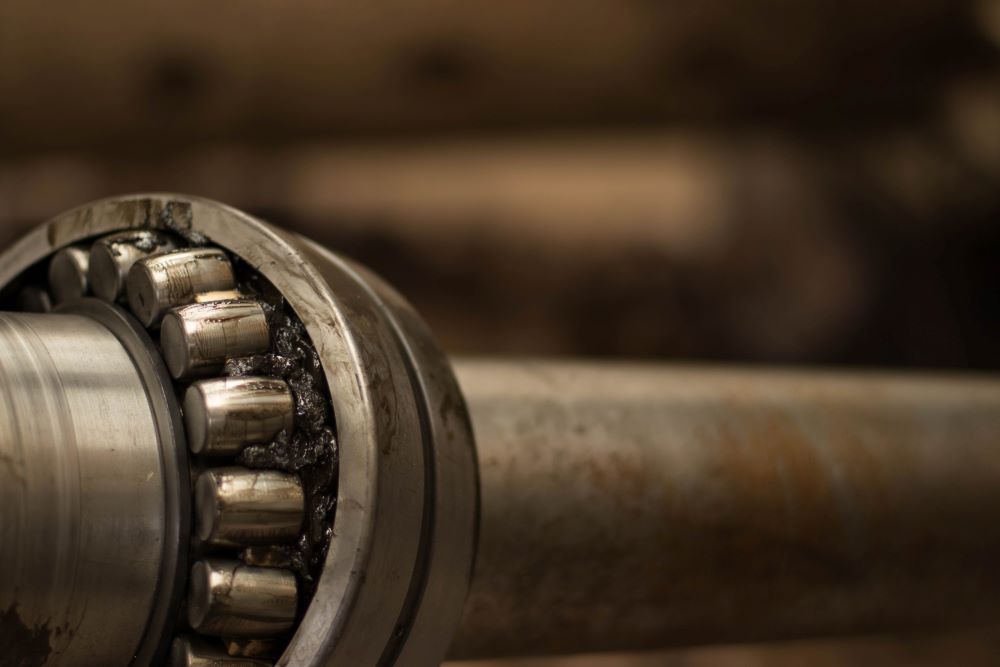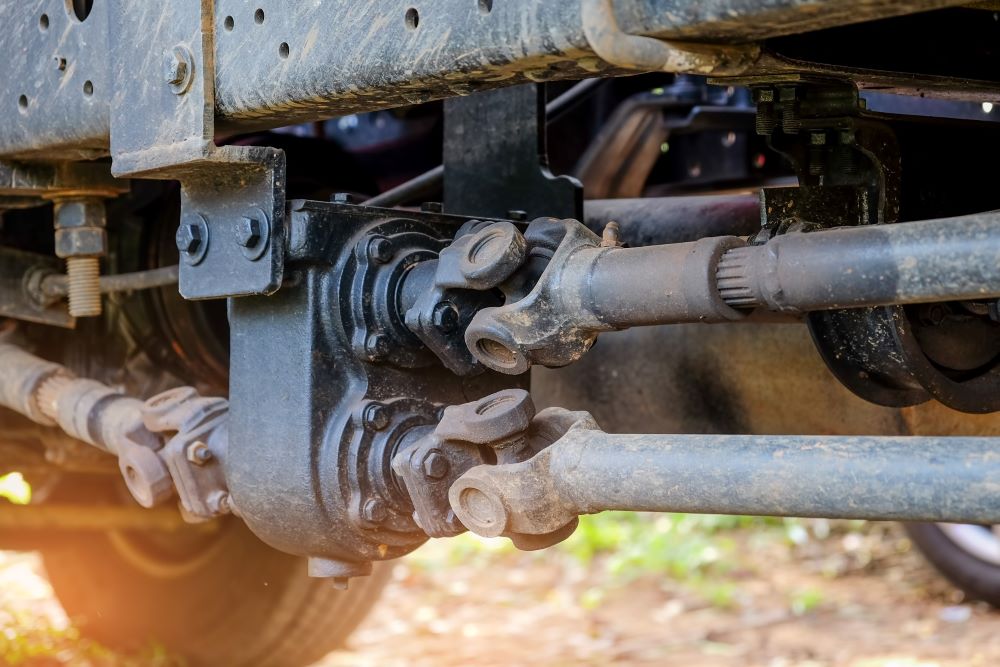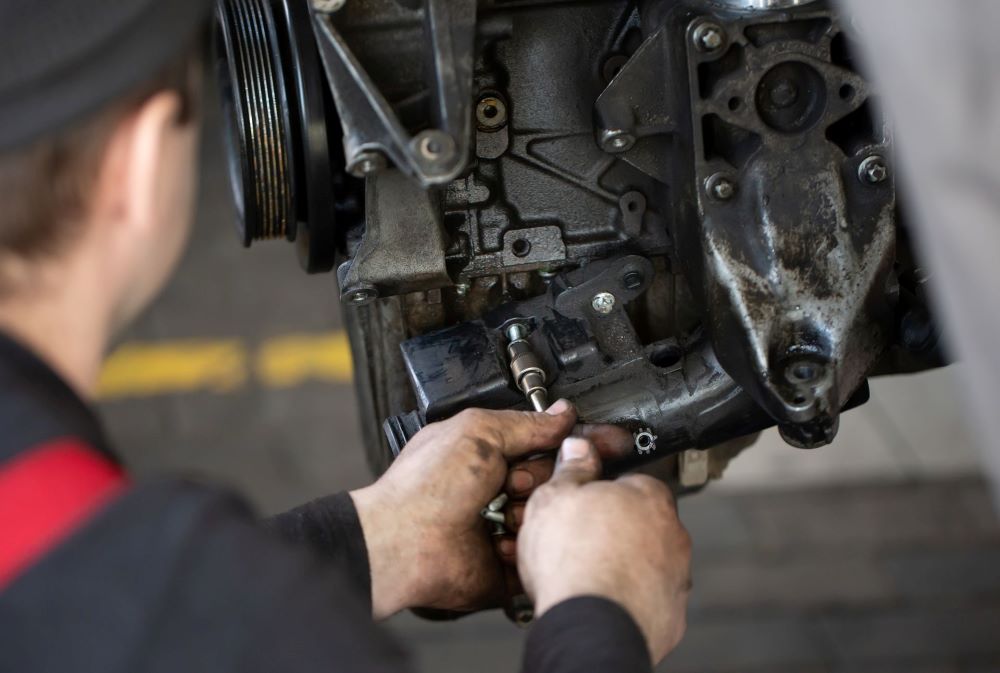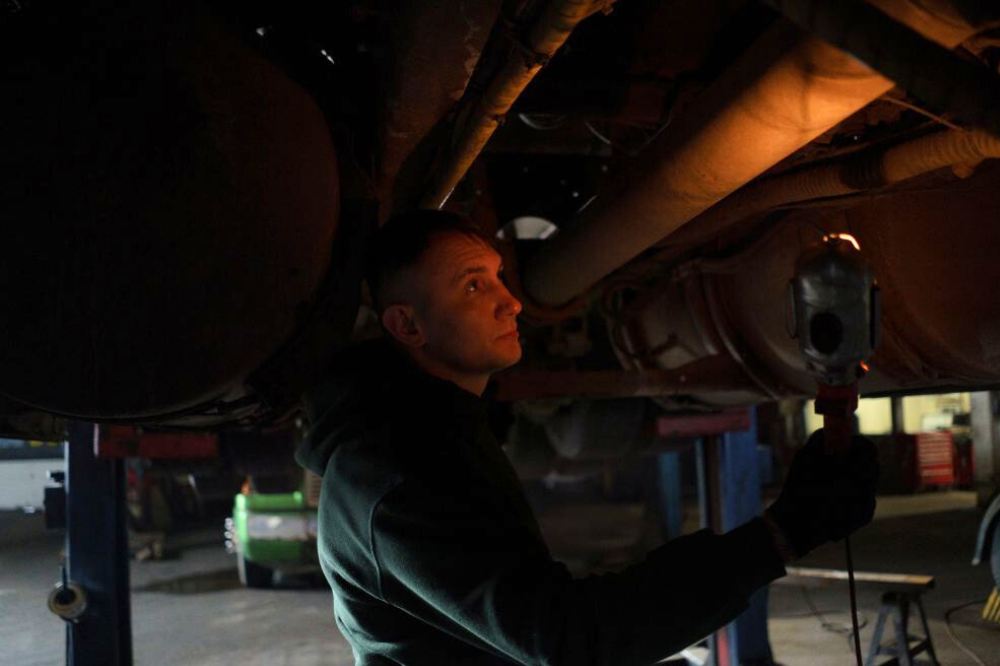
It is a crucial responsibility of any owner-operator to ensure proper maintenance of their semi-truck. This includes keeping an eye on your carrier bearing and other drivetrain components.
Follow this quick guide to learn more about how you can identify issues with a carrier bearing or U-joint, and what you need to do to keep your driveshaft running smoothly.
What is a Driveshaft Bearing?
A driveshaft bearing is a part that helps support and stabilize the drive shaft in a vehicle. It’s like a little wheel or roller that lets the driveshaft spin smoothly and is one of the most important drivetrain components.
This bearing cap sits inside a housing, which keeps it in place and protects it. Without these bearings, the driveshaft could cause wobbling or vibration as it would be loose, causing problems with how vehicles perform.
Bad Carrier Bearing Symptoms
Here are some signs you might notice for bad carrier bearing on semi-truck driveshafts:
- Vibrations: You might feel shaking or vibrations coming from underneath the vehicle, especially at certain speeds.
- Clunking and banging noise: There could be loud, sudden noises like clunking or banging, especially when accelerating or decelerating.
- Howling and growling noise: You may hear a howling or growling noise, particularly when driving at higher speeds or during turns.
These symptoms suggest that the carrier bearing, or other drivetrain components, needs attention. It’s essential to get this checked and to carry out driveshaft repair to avoid further damage to your vehicle.

Causes of Bad Carrier Bearings and U-Joints
Your carrier bearing and U-joint can go bad because of a couple of different reasons:
- Wear and tear: Over time, the constant movement and pressure on these parts can lead to wear and tear, causing them to degrade.
- Lack of lubrication: Insufficient lubrication can lead to increased friction and heat, accelerating wear on the bearings and joints.
- Excessive loads: Carrying heavy loads or towing frequently can put extra strain on the carrier bearings and U-joints, causing them to wear out faster.
- Improper maintenance: Neglecting regular maintenance, such as greasing the bearings or checking for wear, can contribute to premature failure.
- Water and contaminants: Exposure to water, dirt, and other contaminants can corrode or damage the bearings and U-joints, leading to failure.
- Misalignment: If the driveshaft or axle components are not properly aligned, it can put uneven stress on the bearings and joints.
How Long Do Driveshaft Bearings Last?
Generally, driveshaft bearings can last anywhere from 50,000 to 100,000 miles under normal driving conditions. However, it’s essential to monitor for any signs of wear or damage and replace them as needed to prevent further issues.
Here are some factors that influence the lifespan of these bearings:
- Usage: Heavy usage, such as towing or frequent driving on rough terrain, can wear out the bearings faster.
- Maintenance: Regular maintenance, including greasing and inspection, can help extend the lifespan of your bearings.
- Quality: The quality of the bearings themselves can affect their lifespan. Higher-quality bearings will likely last longer than lower-quality ones.
- Driving conditions: Driving in extreme conditions, such as extreme temperatures or constant exposure to water and contaminants, can shorten the lifespan of your bearings.

How to Check and Diagnose the Carrier Bearing and U-Joints
Just like you need to keep an eye out for bad fuel filter symptoms or bad shocks, knowing how to look after your carrier bearings is important. Follow these steps to check and diagnose the carrier bearing and U-joints:
- Listen for noise: Pay attention to any unusual noises, like clunking, banging, howling, or growling, especially during acceleration, deceleration, or turning.
- Feel for vibrations: Notice any vibrations felt through the vehicle, particularly at certain speeds or when accelerating.
- Inspect the driveshaft: Look for any visible signs of damage or wear on the driveshaft, including rust, cracks, or bends.
- Check for play: With the vehicle safely lifted and supported, grasp the driveshaft near the carrier bearing and U-joints and try to move it up and down or side to side. Excessive play could indicate worn bearings or U-joints.
- Inspect the U-joints: Look for any signs of play, rust, or damage on the U-joints. You may need to remove any protective covers or shields to access them fully.
- Examine the carrier bearing: Inspect the carrier bearing for any signs of wear, such as excessive play, noise, or leaking grease.
- Consult a mechanic: If you’re unsure about the condition of the carrier bearing or U-joints or if you notice any concerning symptoms, it’s best to consult a qualified mechanic for a thorough inspection and diagnosis.
Can I Drive With a Bad Carrier Bearing?
Driving with a bad carrier bearing is not recommended as it can lead to further damage to the driveshaft and other components of your vehicle’s drivetrain.
It may cause excessive vibrations, noise, and potential loss of control, posing a safety risk. It’s best to have the carrier bearing replaced as soon as possible to avoid any further complications while driving.

Final Thoughts
If you notice any issues with these components, make sure you go in for driveshaft repair as soon as possible. If you leave it too long, the job will just get more expensive, and it could cause additional problems to your vehicle.
Looking to purchase a new truck? Then you’ll need to have the right financing in place. Get in touch with us at Mission Financial to see just how easy it is to get the financing you need for a semi-truck.


